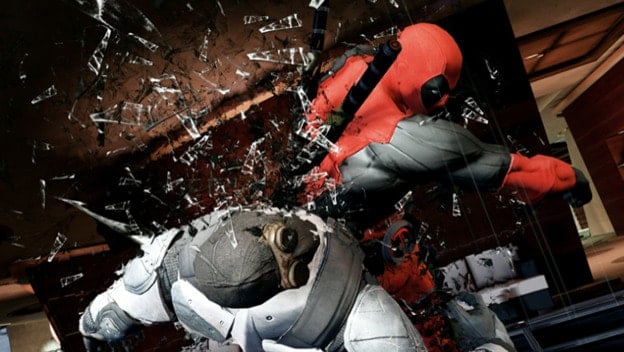Recently, EA announced that it would be pulling out of the social sector of gaming. While the company said it would still have a presence on Facebook, EA decided that it would be focusing more on console and mobile gaming in the near future instead. This is surprising information coming from a company that threw in their chips hard with social titles like SimCity Social and The Sims Social .
Elsewhere in the social-gaming world, Zynga, who could be described as the god monster of all social games, is encountering several financial troubles. It has shut down numerous games and laid off hundreds of workers in an attempt to cut costs and stay afloat. This is the same company that people were saying could dominate the new social-gaming world. Now, some analysts are saying it is nearing closer and closer to bankruptcy.
So what happened? What made this lucrative field of gold that we all knew as social gaming wither and die? What made the social-gaming bubble pop? For my money, it’s the fact that social games actively discourage gamers from playing them for long periods of time.
Social games leverage something very important as revenue: replay value. Unlike other games that basically allow you to play for as long as you like, social games give you a gaming curfew. Whether it’s in minutes, turns spent, Facebook invites, resources, or whatever, at some point a social game says, “Nope, that’s enough playing for now. Either stop playing or buy more turns in our store.”
That’s a pretty gutsy move for social games to make. They are betting that their game is good enough for people to spend money on just to keep playing. It’s not even like they are using the monthly subscription-fee model that MMOs use, which has its own issues but still allows a player unfettered access to the game as long as their subscription is paid up. Companies behind social games are actively saying that you have to pay more the more you want to play your favorite game.
This is problematic for a couple reasons. First of all, it essentially charges a game’s biggest fans with the highest fee. If you absolutely cannot stop playing, you will find yourself dropping wads of cash over and over again just to get more turns. Eventually, these players will become sick of their monetary expenditure quicker than they become sick of the game.
On the flip side, it ensures that people who aren’t all that interested in the game still have to spend money on it at some point. If they aren’t absolutely crazy over it, the chance that they would continue playing an otherwise good game (which, by the way, you can still get ad revenue from) is slim. Here’s an example: Candy Crush , a simple match-three game on Facebook and mobile devices, eventually halts your progress, asking you to purchase more levels or beg your friends to unlock levels for you. While match-three games are fun, and Candy Crush honestly does have some addicting and interesting gameplay mechanics, I, and many of my friends, don’t care enough to purchase more levels or whore out our Facebook pages.
In a sense, social games are playing the numbers game. They know that most of their fanbase won’t be spending money, and instead hedge their bets on their fanbase being large enough (you know, because of social media) that the small portion of people who do spend money on the game, along with ad revenue, will be able to keep the game alive. However, in practice, this tiny portion of gamers that care enough to spend money on the game only do so in their first few days. As games go on and continue to ask gamers for more and more money, the game (like any game) becomes less fun and less and less money is spent on it. Think of this model as opposed to the traditional gaming model, which doesn’t lose any money from gamers who have gotten bored with their purchase. It also doesn’t help that so many social games are near carbon copies of one another, further splitting their prospective fanbases.

The big social-games bubble was inevitably going to pop because of how distracting social games are as well. Social games aren’t really something you do for extended periods of time. They are a distraction, or at best, a ritual. Got nothing to do? Might as well check up on Farmville . The thing about distractions, however, is that they are fleeting. It takes a lot of effort to check your farm every day like a chore. Eventually, people will find other distractions on the Internet that take the place of social games, like cat pictures, or image macros, or videos on YouTube of half-naked Japanese men dancing. This distracting quality rarely builds the fervor and hype that other games do. You hear of hardcore Call of Duty players all the time, but you rarely hear of a hardcore Bejewled player. One of those is gonna drop 100 dollars the next time their franchise updates, while the other will play flash games every so often.
Finally, social games are failing for one more very important reason. They are practically all mobile games. Anything you can play on Facebook, at this point, you can probably play on your iOS or Android. In fact, many people will play games on their iOS and Android while literally sitting in front of their computer. I know I’ve played Candy Crush on my phone while I was waiting to respawn in Battlefield. Mobile games can be played when computers aren’t around, such as during the morning bus commute, while social games still need an open browser to access Facebook. At that point, you might as well play any other video game on your PC, or for that matter, turn on your console.
Simply put, social games don’t have staying power. At best, they are tiny little distractions that can bring in a little bit of ad revenue and some microtransactions here or there, but they won’t ever support a company. This is exactly why big AAA companies are pulling back their social-game support in favor of mobile and console game experiences instead.
